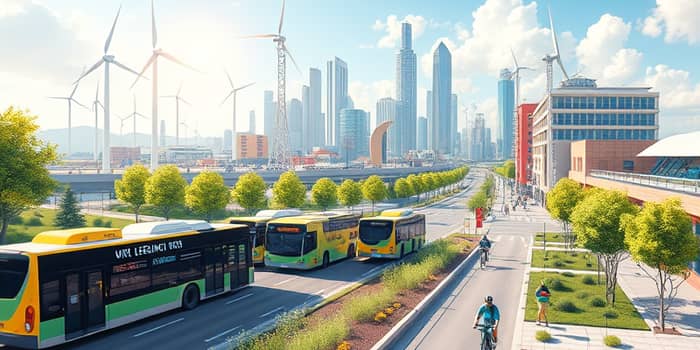
The rapid evolution of global policies is ushering in an era of cleaner, more sustainable mobility. From sweeping regulations to targeted incentives, governments are actively steering the transportation sector toward a low-carbon future.
With the world at a critical environmental crossroads, innovative policy measures are not just aspirational—they are driving tangible emission reductions and reshaping markets.
In 2025, global road transport CO₂ emissions are expected to peak, thanks largely to concerted regulatory efforts in regions like the EU, China, and the US. The European Union projects a 25% decline in emissions starting after 2025, underpinned by expanded, stricter regulations for emission control.
Zero-emission vehicles (ZEVs) are at the heart of this transition. As battery costs fall and manufacturing scales up, the purchase price and total cost of ownership for electric vehicles is nearing parity with conventional cars, making regulation the key lever for mass adoption.
To accelerate uptake, governments worldwide are deploying a variety of supportive incentives:
These incentives have immediate impacts. In Canada, pausing EV support led to a 20% plunge in sales, while Germany’s new commercial tax breaks are set to revitalize purchases.
Electric vehicle (EV) sales are surging globally. From January to May 2025, over 7.2 million EVs were sold worldwide—a 28% increase year-over-year—demonstrating robust consumer demand and expanding infrastructure support.
China leads with 4.4 million EVs sold (+33% YoY), followed by Europe at 1.6 million (+27% YoY), North America with 0.7 million (+3% YoY), and the rest of the world collectively contributing 0.6 million (+36% YoY).
Industry forecasts suggest annual EV sales could top 20 million by year-end 2025, accounting for over one-quarter of all new car sales. In the US, EVs already represent about 10% of new cars, with California soaring to 25%.
Regional highlights illustrate diverse growth stories:
Several policy tools are proving indispensable:
By redirecting infrastructure dollars from highway expansion to charging networks and bus rapid transit, cities are laying the groundwork for a robust charging network expansion efforts and a more resilient public transport system.
Beyond emissions cuts, the low-carbon transition delivers wide-ranging benefits. Clean transport investments spur manufacturing, create skilled jobs, and foster new business models in shared mobility and digital platforms.
Policies now increasingly emphasize economic diversification and new job creation, ensuring communities gain from green growth. Moreover, equity-focused measures, such as subsidized transit fares and EV leasing programs, broaden access to clean mobility for all, reducing disparities in urban mobility.
Despite progress, significant hurdles remain. Regions outside high-adoption hubs like California and Europe continue to lag, highlighting the need for sustained policy support and investment.
Legacy infrastructure—rooted in fossil-fuel highways and refueling networks—poses a formidable challenge. Transitioning to electric fleets at scale demands substantial investment and intervention to upgrade grids, install chargers, and retrain workforces.
Divergent national policies can also create market uncertainty, underscoring the importance of coordinated international frameworks to maintain momentum.
Policy modeling indicates that only an ambitious, policy-led scenario can keep global warming well below critical thresholds. Continued regulatory momentum and rapid implementation of new measures are essential to align transportation emissions with Paris Agreement goals.
Looking ahead, emerging technologies such as autonomous electric vehicles and hydrogen fuel cells are beginning to enter policy discussions, offering additional pathways to decarbonize heavy-duty transport.
By harnessing a multi-pronged approach—combining regulations, incentives, and infrastructure investment—the world can accelerate the transition to a zero-emission future for transportation and secure long-term environmental and economic resilience.
As policy landscapes evolve, collaboration among governments, industry stakeholders, and communities will remain vital. Through shared vision and decisive action, the global transport sector can achieve both climate targets and equitable access to sustainable mobility.
References













